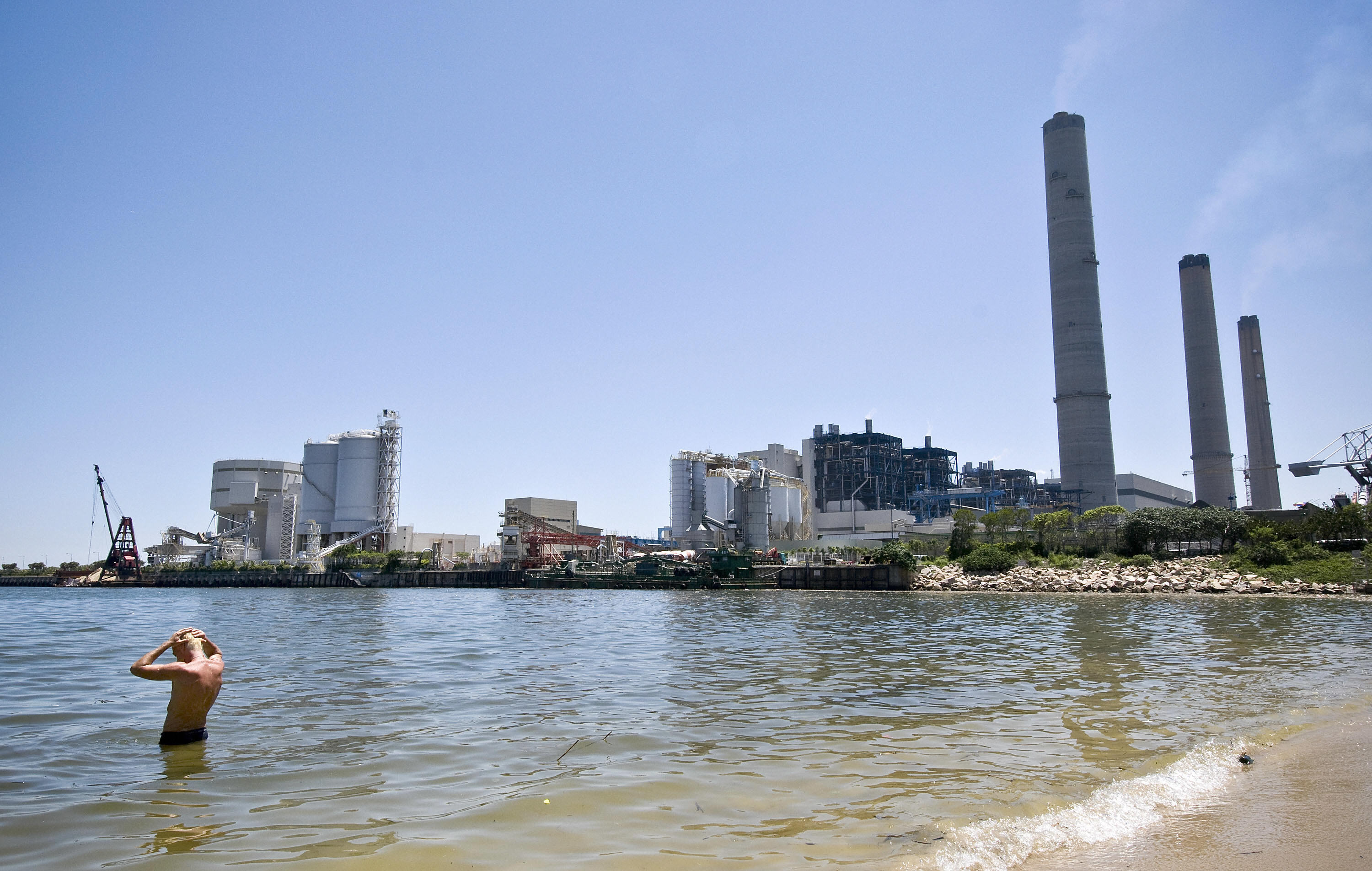Pornographic digital streaming generates 81 million tons of carbon each year, which is equivalent to the CO2 emissions of 72 countries combined, a new study by the Shift Project found.
These 72 countries are the nations with the lowest carbon emissions in the world, according to 2018 European Union report, “Fossil CO2 Emissions Of All World Countries,” and include places like Haiti and the Democratic Republic of the Congo, which have populations of 11 million and 81 million, respectively. The sum total of the carbon emissions of all of these 72 countries combined is the same as the CO2 released into the atmosphere by pornography, according to the study created by the French think tank and published Thursday.
These 72 countries produce much less CO2 than more developed countries. For example, the amount of carbon emissions resulting from pornography are similar to twice the carbon emissions of Hong Kong.

A man takes a dip at the beach near the coal power plant in Lamma island in Hong Kong on June 21, 2008. Hong Kong has joined the international carbon trading structure with a promise to slash emissions, but analysts say the move will struggle to produce any serious reductions in greenhouse gases. (ANDREW ROSS/AFP/Getty Images)
Online video is stored in data centers and is transferred to smartphones and computers via cables, optical fibers, modems, and mobile network antennae.
“All these processes require electricity whose production consumes resources and usually involves CO2 emissions,” according to the Shift Project. Pornhub, the largest pornographic streaming site, reportedly used more than 6 million kilowatts in 2016 to power its streaming services, according to the Atlantic, and this number is only increasing.
Back in April, Pornhub introduced an initiative to help the environment called “#BeeSexual,” in which porn stars performed a pornographic voiceover on videos of bees. The revenue from these videos supported Operation Honey Bee and the Centre for Honeybee Research.
Pornography accounts for more than one quarter of video streaming (27 percent), but this does not include live pornography, like from so-called “cam girls.” The energy consumption of all digital technologies is increasing by 9 percent every year, the Shift Project also found. (RELATED: Driving A Tesla Results In More CO2 Than A Mercedes Diesel Car, Study Finds)
“This study doesn’t note how many Kilowatts it took to produce and transport magazines and DVDs, which were the primary ways people accessed pornography before streaming became popular. So it’s tough to gauge how much it has really changed over the years,” says Cory Price, Vice President of Pornhub.
However, experts say the internet has accelerated the environmental impact of pornography because of how it has enabled its surge in popularity, according to the Atlantic.
“It’s also important to note that all media consumption is environmentally taxing, and it’s not endemic of just the adult entertainment industry,” added Price.
Pornhub also noted to the Daily Caller their environmental initiatives “Give America Wood,” which planted trees for up to 1.35 million views on a specific pornographic category, and “Save The Whales,” which donated $36,500 to whales because of people watching pornography.
The study calls for regulation to decrease emissions from digital technology. The authors specifically call for “sobriety in online video watching,” meaning reducing video file size and reducing the use of video files.
“Digital sobriety consists in prioritizing the allocation of resources as a function of uses,” the study says.
“It is not a question of being ‘for’ or ‘against’ pornography,” the study continues. “The challenge is to avoid a use deemed precious from being impaired by the excessive consumption of another use deemed less essential.”
The authors did not elaborate on which uses of digital technology they consider less essential.
In 2008, pornography usage rapidly increased after “tube sites” emerged, which allow viewers to watch pornography for free in a similar fashion as YouTube. Porn sites today receive more regular traffic than Netflix, Twitter, and Amazon combined, according to the Huffington Post. In 2018, more than 5,517,000,000 hours of pornography was consumed on Pornhub.
In the Green New Deal, an environmental economic stimulus package, New York Democratic Rep. Alexandria Ocasio-Cortez warns the world must reach net-zero global emissions by 2050 “to avoid the most severe impacts of a changing climate.”

U.S. Rep. Alexandria Ocasio-Cortez (D-NY) speaks during a rally on her Green New Deal at Howard University May 13, 2019 in Washington, DC. (Photo by Alex Wong/Getty Images)
One stated goal of the Green New Deal that could combat emissions from digital pornographic streaming is “building or upgrading to energy-efficient, distributed, and ‘smart’ power grids, and ensuring affordable access to electricity.”
Another possible solution to help the environment from pornography CO2 emissions comes from Russian government-owned news agency Sputnik International: “Get your hands off your laptop if you don’t want to be a climate criminal.”


